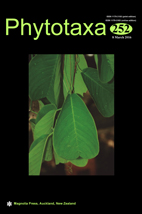Abstract
Fenzl (1833, 1840) described the taxon Schizotechium as a section of the genus Stellaria Linnaeus (1753: 421) (Caryophyllaceae Juss.) to accommodate the Himalayan Stellaria crispata Wallich ex D.Don (1825: 215) [= Stellaria monosperma Buchanan-Hamilton ex D.Don (1825: 215)]. The section was morphologically characterized in having the calix 5-partite, 10 hypogynous stamens, the ovary 2–3-ovulate, (2–)3 styles, the capsule 1(–2)-seeded, and often without a central collumella. Bentham (1862), unaware of raised generic rank for the section by Reichenbach (1841), also pointed out the distinctness of this group, strongly supporting the generic rank. He concluded: “Schizotechium Fenzl, although only proposed as a section of Stellaria might have perhaps rather more claims than any of the preceding [subgenera/sections of Stellaria included in the said paper (Bentham 1862)] to be adopted as a genus. It consists of two Himalayan species with a scandent habit and diffuse panicles, almost as in Brachystemma D. Don (1825: 216) and only 3 ovules, of which one ripens. The ovary might thus be supposed to be reduced to uniovulate carpels, and to be brought technically nearer to that of Phytolaccaceae R.Br., but there is no central axis, and a slight comparison of actual specimens at once give the idea that it is an exceptional and irregular reduction in the ovules of a closely compound ovary, and not a normal conformity of the ovules with as many distinct or well-marked carpels. The leaves arrangement, inflorescence, and flowers are in all other respects those of Stellaria in which genus we continue to retain Schizotechium as a section.” Notably, members of Schizotechium differ from the other belonging to Stellaria by the following characters: sub-scandent habit, occurrence of tuberous or fusiform fleshy roots, large, diffuse, many-flowered panicle of compound cymes, central collumella of capsule extremely reduced or nearly absent and capsule with 1(–2) fertile enlarged seed and rest sterile, undeveloped ovules (Bentham 1862, Edgeworth & Hooker 1872).

